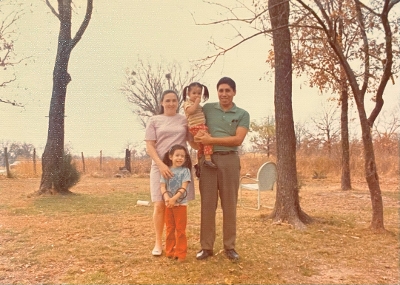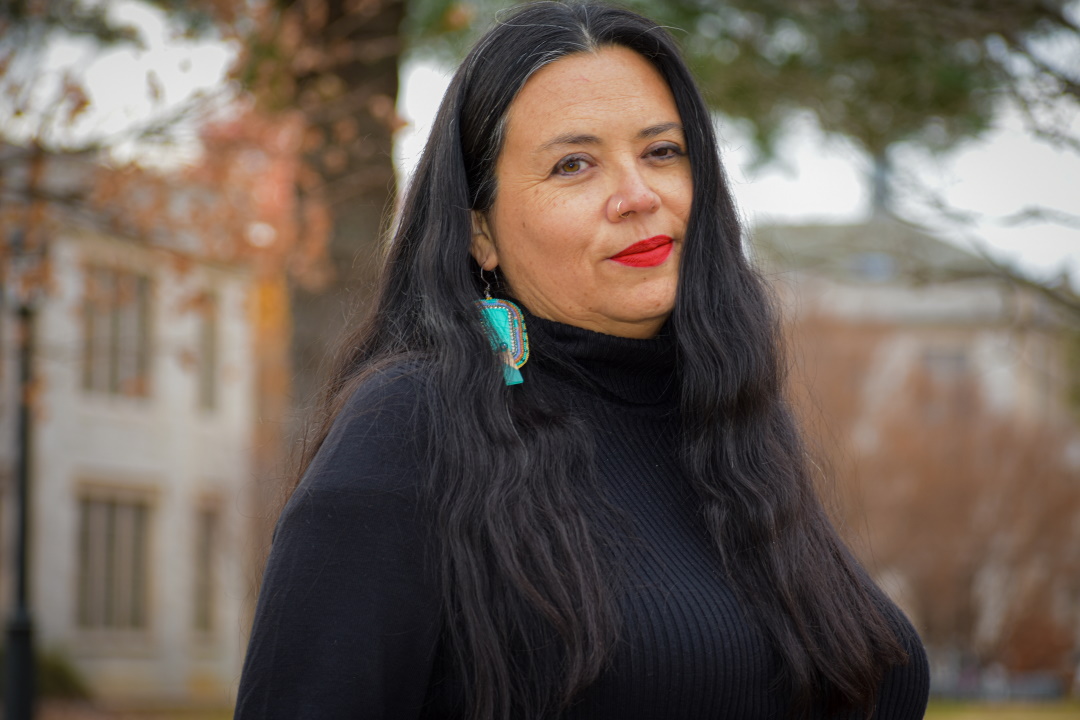Seeing Ourselves: Correcting the Landscape
My children have always known they are Cherokee, a fact they shared with classmates in Texas, the historic lands of the Lipan Apache, Comanche, Caddo, and others. The response was often, “You can’t be Indian; all the Indians are dead.”
My children have always known they are Cherokee, a fact they shared with classmates in Texas, the historic lands of the Lipan Apache, Comanche, Caddo, and others. The response was often, “You can’t be Indian; all the Indians are dead.”
Aside from the impoliteness of non-Natives using the misnomer Indian when the tribal identification has just been provided…despite the ethnic cleansing in the taking of Indian land that is a part of this continent’s history, the reports of our death have been greatly exaggerated.
I grew up in Tulsa, Oklahoma, around Native people from a variety of tribes, including my father’s Cherokee family. The Native people I know are very much alive. They make art, participate in tribal politics and community affairs, touch the lives of students through American Indian Education programs, work as lawyers, and raise families. We are everywhere.


Left: The Rogers family circa 1972. Front: Andrea L. Rogers. Back, left to right: Loretta, Angela, and Gene Rogers.
Right: The author's father, Gene Rogers, with her daughter Elena Henry in 1998. Photos courtesy of Andrea L. Rogers.
However, when I was growing up in the 1970s, there was a lack of books for children that reflected contemporary Cherokee people, or any Native people. It was as if after the 1890s, we vanished.
We haven’t.
* * *
In 2014, Walter Dean Myers and his son Christopher Myers published two essays in tandem in the New York Times: “Where Are the People of Color in Children’s Books?” and “The Apartheid of Children’s Literature.” To take off from the title of Walter Dean Myers’s essay: where are the Native people in children’s books? And as Christopher Myers wrote, “Children of color remain outside the boundaries of imagination. The cartography we create with this literature is flawed.”
A lot has changed, due in no small part to the advocacy of Walter Dean Myers, in addition to the work of people such as Debbie Reese and Jean Mendoza with American Indians in Children’s Literature, work by the American Indian Library Association, and Heartdrum, the HarperCollins imprint curated by Cynthia Leitich Smith, who as an author has mapped many new worlds herself as well. Rock-star Angeline Boulley created new (to publishing) Indigenous heroines and won the 2022 Printz and Morris awards for Firekeeper’s Daughter. We have seen Native books by Kevin Noble Maillard (Fry Bread) and Traci Sorell (We Are Grateful: Otsaliheliga) win the Sibert Medal and an Honor, respectively. We have had a first Native Caldecott winner from illustrator Michaela Goade with We Are Water Protectors, written by Carole Lindstrom. We have seen significant contributions from Joseph Bruchac, Cherie Dimaline, Louise Erdrich, Julie Flett, Eric Gansworth, Laurel Goodluck, Stephen Graham Jones, Darcie Little Badger, Kim Rogers, Monique Gray Smith, Brian Young, and numerous others. I have so many more titles charting new worlds I can hand not just to my children, but to anyone, representing not just my tribe, but also others.
Too much still has to change. The map provided by children’s literature has great swaths of land unmapped by the people who live on that land or historically inhabited it. There are over 570 federally recognized tribes in the United States as well as many state-recognized tribes. Of those tribes, only a handful see adequate, accurate representation in children’s books. Even fewer have books written by authors from those tribes.
* * *
Those children who told my children they couldn’t exist were simply repeating what they had read. The geography of their imaginations included unicorns, dragons, and wizards. But no Cherokees. The best librarian, teacher, or parent in the world cannot provide a child with a book that doesn’t exist.
My hope is that this landscape is changing. I want a book in every genre and format, by writers from every tribe.
No child should be told they can’t exist. Native children on Native land included.
From the May/June 2023 special issue of The Horn Book Magazine: Diverse Books: Past, Present, and Future. Find more in the "Seeing Ourselves" series here.

RELATED
ALREADY A SUBSCRIBER? LOG IN
We are currently offering this content for free. Sign up now to activate your personal profile, where you can save articles for future viewing.







Add Comment :-
Be the first reader to comment.
Comment Policy:
Comment should not be empty !!!